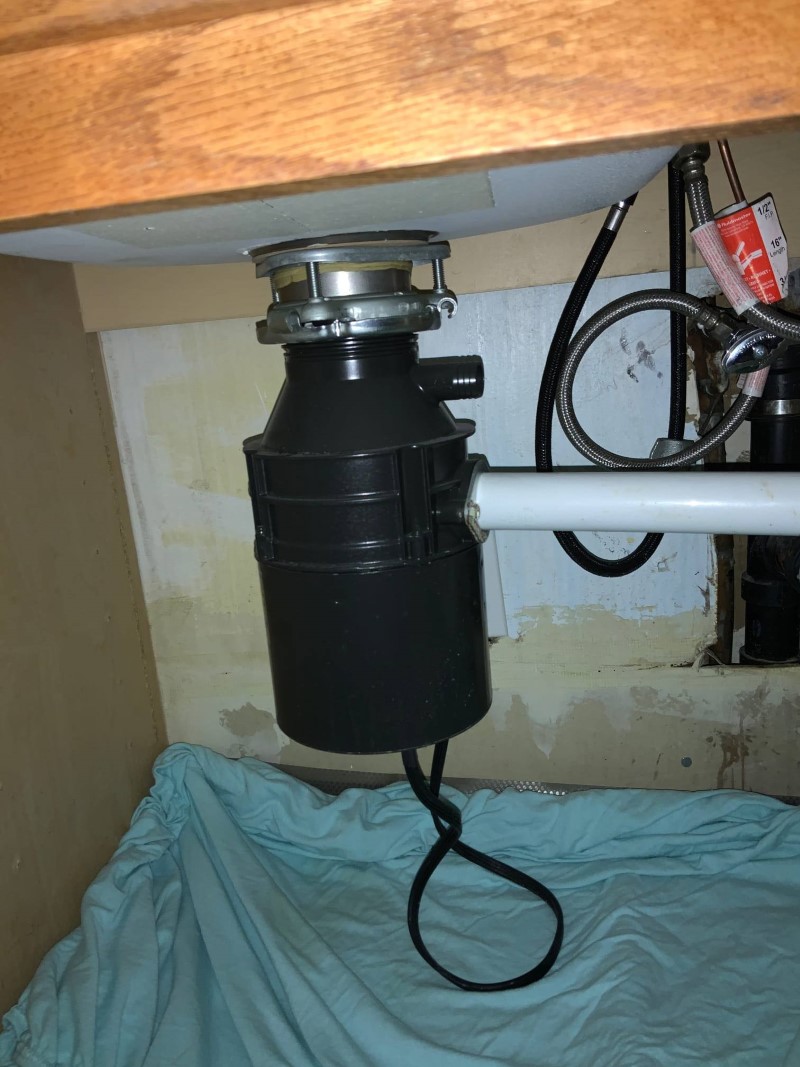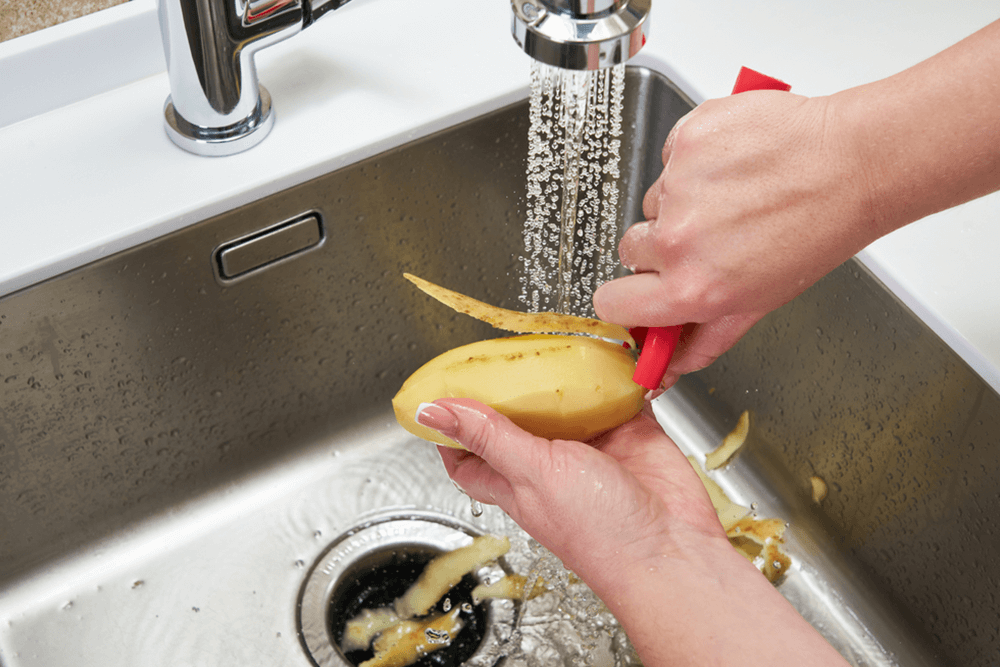The publisher is making a number of great annotation on the subject of How to fix a pretty consistent leak from my garbage disposal overall in the article just below.

Waste disposal unit are vital kitchen appliances that help in dealing with food waste efficiently. However, a leaking waste disposal unit can be an irritating and untidy issue to deal with. Thankfully, many leakages can be repaired easily with a couple of easy steps. In this write-up, we will review exactly how to deal with a leaking waste disposal unit successfully.
Intro
Waste disposal unit are mounted under kitchen area sinks and are designed to shred food waste right into smaller pieces, allowing it to travel through the plumbing system easily. While these tools are normally reputable, leakages can happen with time due to deterioration, loosened connections, or damage to the device.
Usual Causes of Leaks in Waste Disposals
Worn Seals and Gaskets
Seals and gaskets play a vital function in stopping water from dripping out of the garbage disposal. In time, these elements can deteriorate, bring about leaks around the disposal device.
Loose Connections
The links in between the garbage disposal and the pipes system can become loose with time, creating water to leak out during procedure.
Cracks or Holes in the Disposal System
Physical damage to the garbage disposal, such as cracks or holes in the real estate, can likewise cause leakages.
Determining the Resource of the Leakage
Prior to attempting to deal with a leaking garbage disposal, it is essential to determine the source of the leakage. This can typically be done via visual examination or by carrying out simple examinations.
Visual Examination
Inspect the waste disposal unit system thoroughly for any kind of indicators of water leakage. Pay very close attention to locations around seals, gaskets, and connection points.
Examining for Leakages
One way to evaluate for leaks is by running water through the disposal system and looking for any visible indications of leakage.
Devices and Materials Needed for Fixing a Leaking Garbage Disposal
Before beginning the repair work process, collect the necessary devices and products, including a screwdriver, adjustable wrench, plumber's putty, replacement seals or gaskets, and epoxy or patching material for fixing cracks or holes.
Step-by-Step Guide to Taking Care Of a Dripping Waste Disposal Unit
Switch off the Power
Prior to trying any kind of fixings, ensure that the power to the garbage disposal device is turned off to prevent the danger of electrical shock.
Situate the Leak
Recognize the exact location of the leakage and determine the reason.
Tighten up Links
Use a wrench to tighten up any kind of loose links in between the disposal system and the pipes system.
Replace Seals or Gaskets
If the leak is due to worn seals or gaskets, eliminate the old elements and change them with brand-new ones.
Patching Fractures or Holes
For splits or holes in the disposal system, use epoxy or an ideal patching product to secure the broken area.
Examining the Garbage Disposal After Repair Work
Once the repair is full, check the garbage disposal by running water through it to ensure that the leakage has been dealt with.
Preventive Maintenance Tips to Stay Clear Of Future Leaks
To avoid future leaks, it is essential to execute routine upkeep on your garbage disposal. This consists of keeping it tidy, avoiding putting non-food products or tough items down the disposal, and occasionally checking for leaks or various other issues.
Final thought
Finally, taking care of a leaking waste disposal unit is a reasonably straightforward procedure that can be finished with standard devices and products. By complying with the steps outlined in this short article and practicing preventative upkeep, you can keep your waste disposal unit in good working condition and avoid pricey repair work in the future.
HOW TO REPAIR A LEAKING GARBAGE DISPOSAL
The first thing to do if your garbage disposal starts to leak or exhibits other symptoms of wear and tear is to inspect the appliance quickly. Before making any repairs, check for any obvious cracks or damaged parts and turn the disposal off at the power source. Once you have located the issue, several tools might assist you in solving it. Many resources are available to assist you in putting your disposal back in working order, whether by purchasing new parts or professional assistance from a repair technician. So immediately act if you need help with leaky garbage disposal. You can rapidly resolve the problem and enjoy smoothly functioning appliances with thorough troubleshooting and help from web resources.
Food waste is disposed of using a garbage disposal system, which grinds and flushes it down the toilet. A garbage disposal is a motorized device with one or more rotating blades that grinds up food waste into little bits. They are commonly found under the kitchen sink. A dishwasher inlet or connector is often built into garbage disposals, allowing extra water to drain into the sink’s dishwasher. Several things, such as clogs, worn-out components, or damage to the inside walls of the unit, can bring on garbage disposal leaks or other problems.
WHAT ARE SOME COMMON PROBLEMS WITH GARBAGE DISPOSALS?
Jamming: One of the most frequent issues with garbage disposals is jamming. It occurs when hard or fibrous materials, such as bones, potato peels, or fruit pits, get stuck in the disposal’s blades or impeller. It can prevent the unit from operating correctly or cause it to make unusual noises. Clogging: If too much food waste or non-food items are put into the disposal at once, it can lead to clogging. Clogged disposal may result in slow drainage or a complete backup of water in the sink. Grease and fats can also solidify inside the disposal and contribute to clogging. Leaks: Garbage disposals can develop leaks over time. The most common areas for leaks are the sink flange, the discharge pipe connections, or the dishwasher connection. Leaks can cause water damage and need to be addressed promptly. Foul odors: Food residue can build up in disposal over time and cause unpleasant odors. Bacteria and mold growth inside the unit can also contribute to foul smells. Dull blades: The grinding blades in the disposal can become dull over time, resulting in inefficient chopping and grinding of food waste. That may lead to more frequent jams and increased strain on the motor. HOW CAN YOU TELL IF YOUR GARBAGE DISPOSAL IS LEAKING?
Visible water: Check underneath the sink where the garbage disposal is installed. If you notice water pooling or dripping around the unit or any adjacent pipes, it’s a clear sign of a leak. Musty odor: A persistent or moldy smell from your kitchen sink area could indicate a hidden leak. The moisture from a leaking garbage disposal can create a damp environment that promotes mold and mildew growth. Water damage: Examine the area surrounding the garbage disposal for any signs of water damage. Look for water stains, discoloration, or warping on the cabinet floor or walls beneath the sink. Decreased performance: A leak in the garbage disposal can affect its functionality. If you notice that the disposal is not grinding food waste properly or is making unusual noises, it could be due to water damage or a leak compromising its mechanisms. Rust or corrosion: Inspect the garbage disposal for any signs of rust or corrosion. A leaking unit can cause metal components to deteriorate over time. Look for rust-colored stains or deterioration on the disposal unit or surrounding pipes. https://theappliancepeople.com/how-to-repair-a-leaking-garbage-disposal/

Do you really like more info about The Handy Guide To Fixing Your Garbage Disposal Leaking? Post feedback directly below. We'd be delighted to know your opinion about this posting. In hopes that you visit us again in the near future. Appreciated our piece? Please share it. Let others check it out. Thanks for your time. Don't hesitate to come by our website back soon.
Click Here